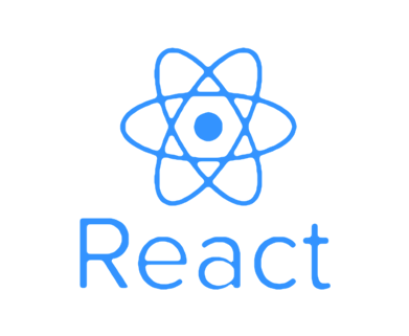What will be taught in the React course? In the React course, you will learn about the nature of working with the library, which is unidirectional and enables fast and intelligent data flow through writing less code. In this way, Facebook has achieved better performance than its competitors.
Becoming proficient in libraries prepares you for the forefront of web developers and the broader IT industry worldwide, as it can be integrated with other domains such as the Internet of Things and more.
Within the React course, you will cover all aspects of the library, from the introductory and foundational stages to the advanced level of mastering design, proper work with components, and the architecture of Redux.
The React course is delivered through frontal lectures, along with exercises, homework assignments, and projects to solidify the material learned and gain practical experience.
An Overview of the React Course
The React course is a foundational and introductory course for students familiar with the JavaScript language who are interested in advancing their skills and learning more about programming. Each lesson will focus on learning a specific aspect of React.
We'll start with an empty index.html file and gradually build up the code. This gradual approach will teach you the main mental models of the React software.
The format of the React course consists of 60 hours, with 50% of the hours dedicated to hands-on exercises.
The skills and abilities you will gain in the React course:
✓ You will learn to use the most powerful development tools.
✓ You will learn to translate JSX to regular JavaScript functions.
✓ You will understand the problems that React software solves.
✓ You will incorporate the best practices into your projects.
✓ You will learn to rapidly develop web applications.
✓ You will become familiar with and understand the component approach.
What is React?
React was initially created by Jordan Walke, a software engineer working for Facebook. React was first deployed on Facebook's newsfeed in 2011 and on Instagram.com in 2012.
The library was developed by Facebook to provide fast and efficient data rendering for its vast repositories. Today, the library is gaining momentum among web developers worldwide and is considered one of the most popular libraries.
React is an open-source JavaScript library used for building user interfaces, especially for single-page applications and modern application development. It focuses on handling the presentation layer and can be used for both web and mobile application development.
React is used to handle the presentation layer for web and mobile applications. It also enables us to create reusable user interface components.
React Software and Redux Library
React is a synchronized software that is closely associated with a highly popular and inseparable library called Redux.
Redux is designed to manage actions and data flow behind the scenes and control the application's state while React takes care of presenting information and design to the user.
The Redux library is built on the foundation of the Flux technology, which has been used by Facebook for a long time.
React allows developers to create large-scale web applications that can change data without having to reload the entire page.
The primary goals of React are speed, scalability, and simplicity. It operates exclusively on user interfaces within applications.
It is suitable for displaying in the MVC pattern. It can be used in combination with other JavaScript libraries or frameworks, such as AngularJS in MVC.
According to the "State of JavaScript 2020" survey, React is the most popular JavaScript framework. The Stack Overflow 2020 survey ranks React as the second most loved front-end technology, just after ASP.NET, reaffirming React's position as the leading JavaScript library.
Why is React a Great Framework?
The features that make the React library so powerful and robust for building modern applications, and what sets React apart from other frameworks and libraries:
React works with a feature called Virtual DOM, a virtual representation of the actual DOM tree. It's merely a data structure of regular JavaScript objects that is kept in memory and synchronized. Virtual DOM processing is faster because it's never displayed to the user; it only exists in memory.
DOM (Document Object Model) is the most critical part of web applications - it represents the structure of a document, mainly HTML. The DOM represents a document with a logical tree. Each branch of the tree ends in a node, and each node contains objects. DOM methods provide programmatic access to the tree. - MDN DOM manipulation is widely used today as modern applications require frequent state changes, animations, effects, etc.
Imagine you have an application, and every time there's a state change, you want to update only the parts of the DOM tree dependent on those changes. You don't want to reprocess the entire user interface from scratch because it's resource-intensive and results in poor user experience.
- The React course includes front-end lectures and hands-on exercises.
- The course duration is about 60 academic hours.
- The React course covers learning React JS, exercises, and solutions.
- Class exercises accompanied by explanations, homework assignments, and solutions on the website.
- Course booklet.
- Videos and presentations on the course website.
- Towards the end of the React course, each student will complete a practical project that summarizes the knowledge gained during the course.
- Lectures are held once a week in the evening hours.













